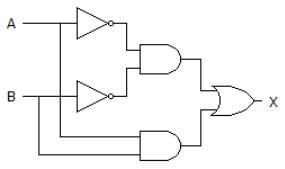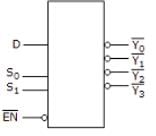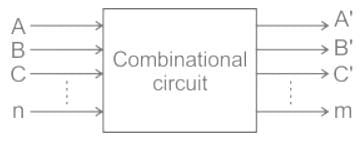Electronics and Communication Engineering (ECE) Exam > Electronics and Communication Engineering (ECE) Tests > Test: Combinational Logic - Electronics and Communication Engineering (ECE) MCQ
Test: Combinational Logic - Electronics and Communication Engineering (ECE) MCQ
Test Description
10 Questions MCQ Test - Test: Combinational Logic
Test: Combinational Logic for Electronics and Communication Engineering (ECE) 2025 is part of Electronics and Communication Engineering (ECE) preparation. The Test: Combinational Logic questions and answers have been prepared
according to the Electronics and Communication Engineering (ECE) exam syllabus.The Test: Combinational Logic MCQs are made for Electronics and Communication Engineering (ECE) 2025 Exam.
Find important definitions, questions, notes, meanings, examples, exercises, MCQs and online tests for Test: Combinational Logic below.
Solutions of Test: Combinational Logic questions in English are available as part of our course for Electronics and Communication Engineering (ECE) & Test: Combinational Logic solutions in
Hindi for Electronics and Communication Engineering (ECE) course.
Download more important topics, notes, lectures and mock test series for Electronics and Communication Engineering (ECE) Exam by signing up for free. Attempt Test: Combinational Logic | 10 questions in 10 minutes | Mock test for Electronics and Communication Engineering (ECE) preparation | Free important questions MCQ to study for Electronics and Communication Engineering (ECE) Exam | Download free PDF with solutions
Test: Combinational Logic - Question 1
Which of the following logic expressions represents the logic diagram shown?


Detailed Solution for Test: Combinational Logic - Question 1
Test: Combinational Logic - Question 2
What type of logic circuit is represented by the figure shown below?


Detailed Solution for Test: Combinational Logic - Question 2
Test: Combinational Logic - Question 3
Which of the following combinations of logic gates can decode binary 1101?
Detailed Solution for Test: Combinational Logic - Question 3
Test: Combinational Logic - Question 4
For the device shown here, assume the D input is LOW, both S inputs are LOW and the input is LOW. What is the status of the Y’ outputs?

Detailed Solution for Test: Combinational Logic - Question 4
Detailed Solution for Test: Combinational Logic - Question 5
Detailed Solution for Test: Combinational Logic - Question 6
Test: Combinational Logic - Question 7
For a two-input XNOR gate, with the input waveforms as shown below, which output waveform is correct?

Detailed Solution for Test: Combinational Logic - Question 7
Test: Combinational Logic - Question 8
Which of the following circuit has its output dependent only upon the present input?
Detailed Solution for Test: Combinational Logic - Question 8
Detailed Solution for Test: Combinational Logic - Question 9
Detailed Solution for Test: Combinational Logic - Question 10
Information about Test: Combinational Logic Page
In this test you can find the Exam questions for Test: Combinational Logic solved & explained in the simplest way possible.
Besides giving Questions and answers for Test: Combinational Logic, EduRev gives you an ample number of Online tests for practice
Download as PDF





















